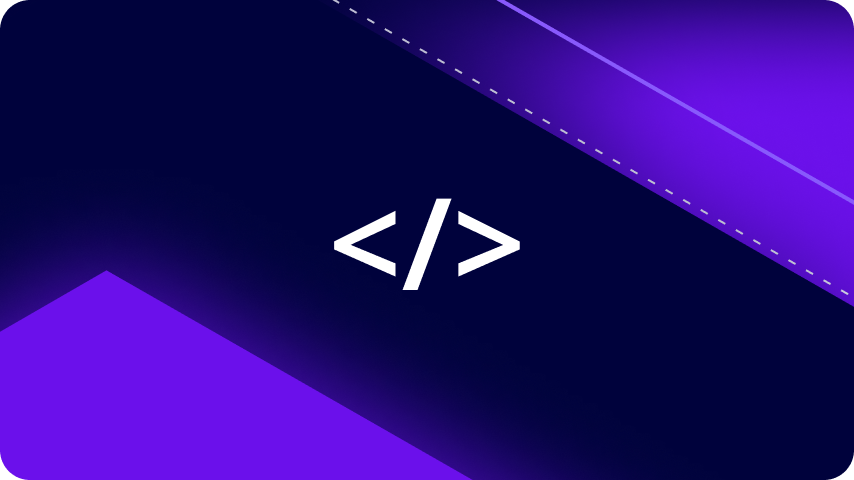November 16, 2023
No cenário em constante evolução da tecnologia da informação, as tendências vêm e vão. Desde o frenesi do Y2K até o festival de palavras da moda como big data, computação em nuvem e microsserviços, os fornecedores de tecnologia muitas vezes se veem acompanhando a mesma onda, independentemente de as soluções realmente justificarem o entusiasmo ou não. Hoje, a onda que todos estamos surfando é a Inteligência Artificial (IA). Parece que todos têm uma mensagemde marketing sobre IA, mas quantos estão lançando recursos que realmente entregam valor genuíno?
Neste post do blog, vou compartilhar uma prévia das inovações que estamos adicionando à Plataforma de Integração Digibee em 2024 – e conectar os pontos sobre como elas apoiam nosso compromisso de capacitar todos os desenvolvedores a construir integrações que possibilitem ciclos de desenvolvimento mais rápidos e melhores.
À medida que você planeja seus projetos de desenvolvimento para 2024, eu o convido a ler este post imaginando como a Digibee pode ajudá-lo a cumprir e superar seus prazos e objetivos de desenvolvimento – e liberar sua equipe de desenvolvimento para criar e inovar.
>> Agende uma demonstração personalizada com nossa equipe de especialistas e veja como o iPaaS da Digibee trará eficiência ao seu negócio.
Digibee: a escolha dos desenvolvedores para integração
Para começar, vamos falar sobre o que queremos dizer quando afirmamos que a Digibee é a escolha dos desenvolvedores para integração.
Antes da Digibee, casos de uso de integração sofisticados eram domínio de algumas poucas soluções legadas de iPaaS. Essas integrações exigem o trabalho de desenvolvedores especializados para criar e manter. Na maioria das organizações, essa especialização cria um gargalo e um acúmulo de projetos de desenvolvimento – enquanto os desenvolvedores aguardam a conclusão do trabalho de integração.
No entanto, existe um vasto mundo de trabalho que atualmente acontece fora das plataformas iPaaS. Estimativas mostram que dois terços das integrações são ponto a ponto, realizadas por codificação personalizada. Ou seja, essas integrações complexas não estão sendo feitas por desenvolvedores de integração por meio de plataformas iPaaS ou outras ferramentas de integração. Esse tempo e esforço de codificação deveriam ser evitáveis, e força os desenvolvedores a fazer um trabalho que carece de escalabilidade e governança.
Ser a escolha dos desenvolvedores significa entregar uma plataforma para todos os desenvolvedores substituir tarefas repetitivas e codificação tediosa. Significa que qualquer desenvolvedor pode criar integrações sofisticadas para casos de uso empresariais. Significa que todas as integrações podem ser feitas por meio de um verdadeiro iPaaS, deixando para trás os problemas que acompanham a escrita, documentação e manutenção de código personalizado.
IA e integração: resultados reais
Como mencionei acima, não falta barulho no mercado sobre IA e suas aplicações para o setor empresarial. Não estou sendo desdenhoso, há realmente alguns usos interessantes de IA e aprendizado de máquina em andamento agora – e muitos estão sendo desenvolvidos em diversos setores. Meu objetivo neste post é ser muito específico sobre a missão da Digibee nessa área e o que isso significa para nossos clientes.
Primeiro, quero dizer que a Digibee sempre teve como foco abstrair tarefas mundanas para que os desenvolvedores possam concentrar seu tempo e esforço na inovação e construção, e não na codificação relacionada à integração. Como a única plataforma de integração de nível empresarial nascida na nuvem, a arquitetura conteinerizada significa que gestão de mudanças, escalabilidade e reutilização são capacidades centrais do nosso iPaaS. Isso faz parte do nosso DNA, com ou sem habilitação de IA.
Talvez você tenha visto que, em junho, apresentamos o assistente de IA da Digibee – uma nova funcionalidade no nosso portal de treinamento para clientes: o Digibee Academy 2.0. A tecnologia é única e movida por IA, projetada para responder perguntas em tempo real de clientes que buscam informações.
Mais recentemente, apresentamos o gerador de documentação baseado em IA, conforme descrito na revista KMWorld neste artigo:
“Apesar de sua importância, criar documentação detalhada e clara de integrações raramente é uma tarefa simples e rápida. O processo manual de documentação frequentemente apresenta inconsistências, imprecisões e lacunas de comunicação que se tornam mais prejudiciais do que o esperado, de acordo com o fornecedor.
O Gerador de IA da Digibee para Documentação de Pipeline foi desenvolvido para revolucionar essa experiência, reduzindo o tempo e o esforço gastos na produção e gerenciamento manual de documentação de pipeline. Esta funcionalidade visa entregar maior compreensão e clareza na compreensão dos processos de integração – tanto para usuários técnicos quanto para negócios – por meio de uma análise holística do pipeline.”
Este é o exemplo perfeito de como estamos usando a IA – para automatizar inteligentemente tarefas que são tanto mundanas quanto suscetíveis a erros humanos caros.
Os lançamentos planejados entre agora e meados de 2024 continuam seguindo esse mesmo tema, incluindo uma experiência de depuração verdadeiramente diferenciada, uma ferramenta inédita para migrar integrações para a Digibee a partir de plataformas de integração legadas e um gerador de pipeline.
Em termos de capacitar as equipes de desenvolvimento para focarem no desenvolvimento e não na integração, essas melhorias lideradas por IA estão potencializando ainda mais o nosso motor já poderoso. O futuro é promissor para nossos clientes.
Próximos passos com a Digibee
Eu recomendo fortemente que os líderes das equipes de desenvolvimento e arquitetura agendem uma demonstração com a Digibee para conhecer nossas capacidades. Cada vez mais, notamos que nossos novos clientes são aqueles que estão utilizando uma das plataformas de iPaaS legadas, buscando uma maneira de reduzir o backlog de projetos de desenvolvimento que integrações complicadas estão retendo. Compartilhe seus planos conosco e mostraremos como podemos ajudar!








